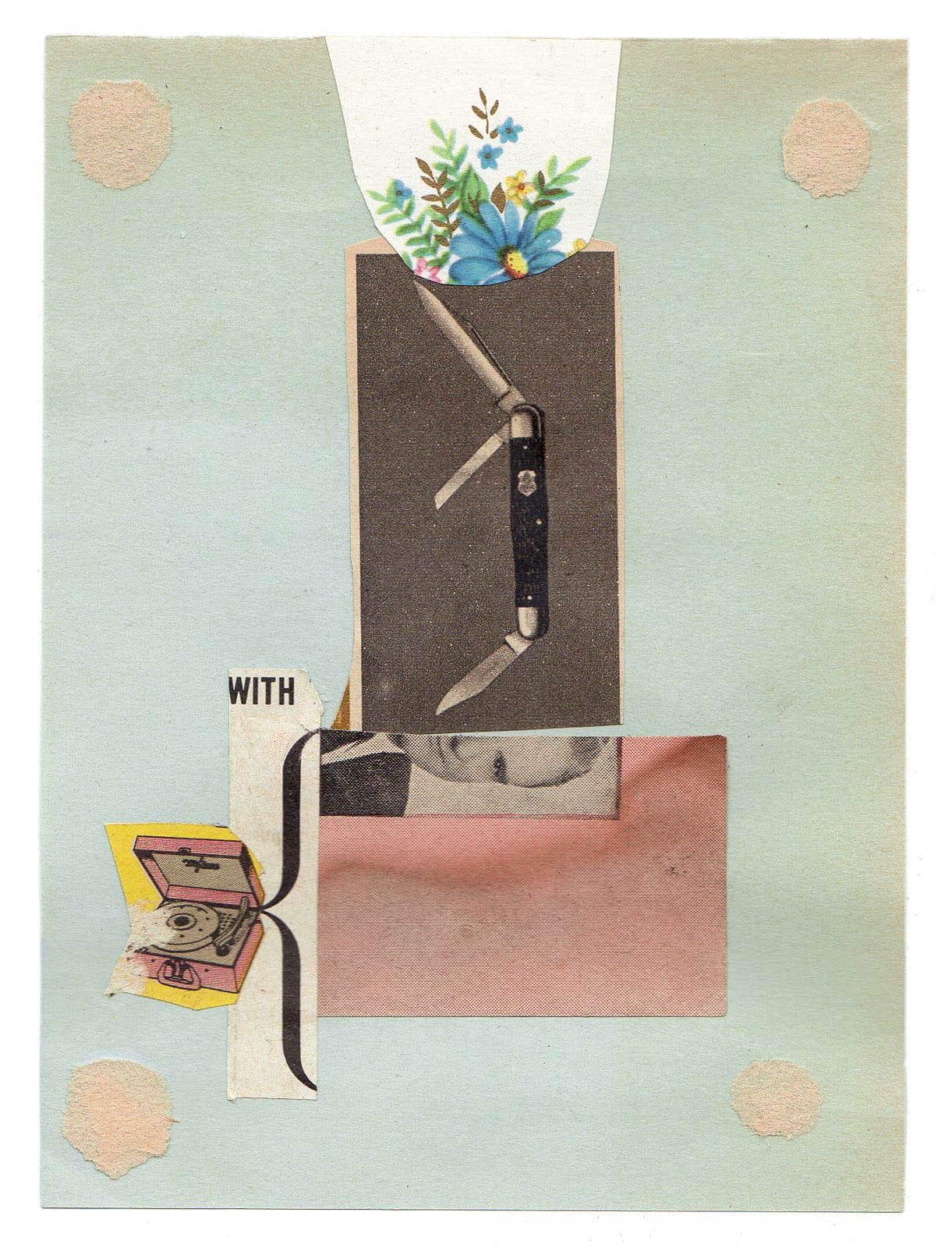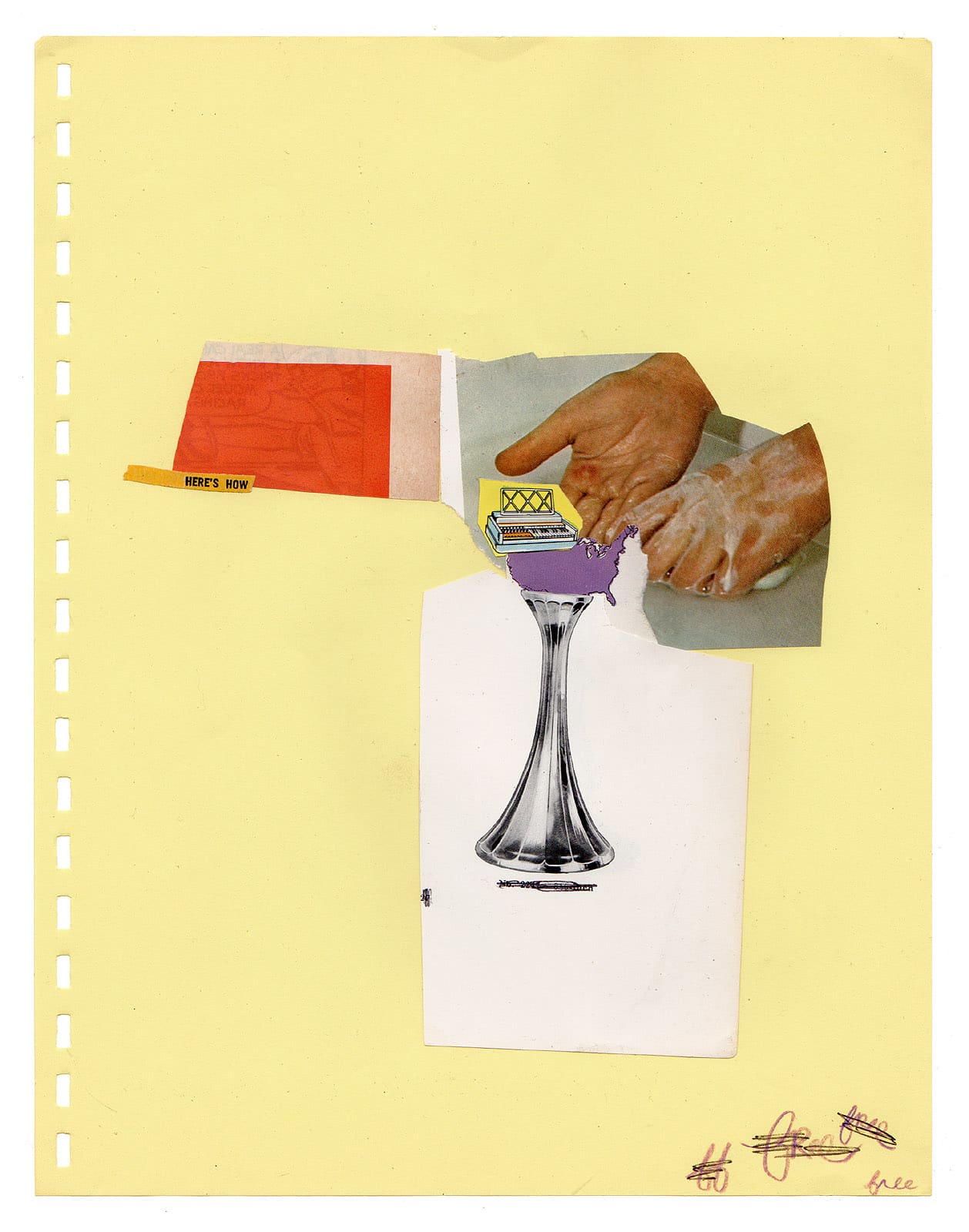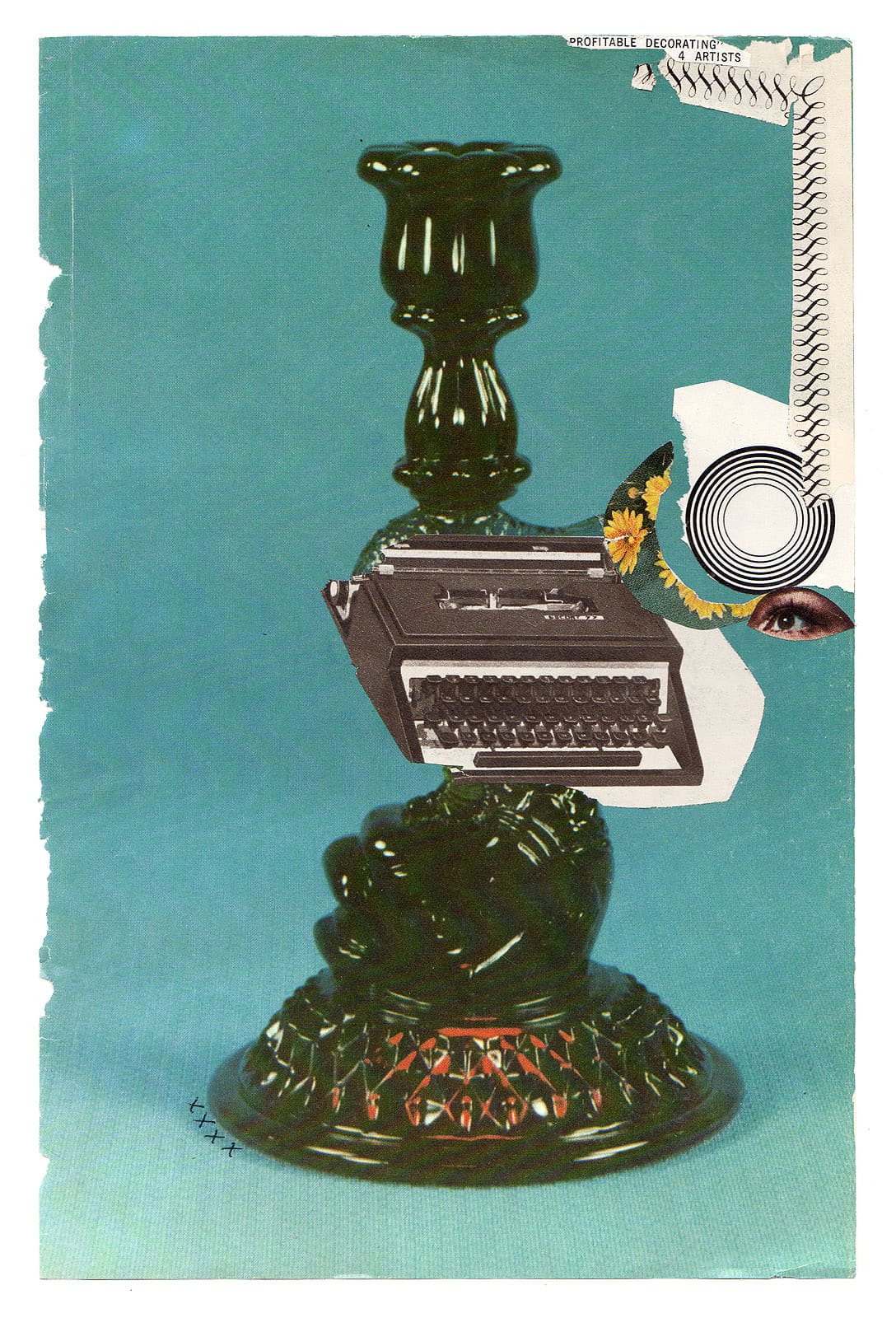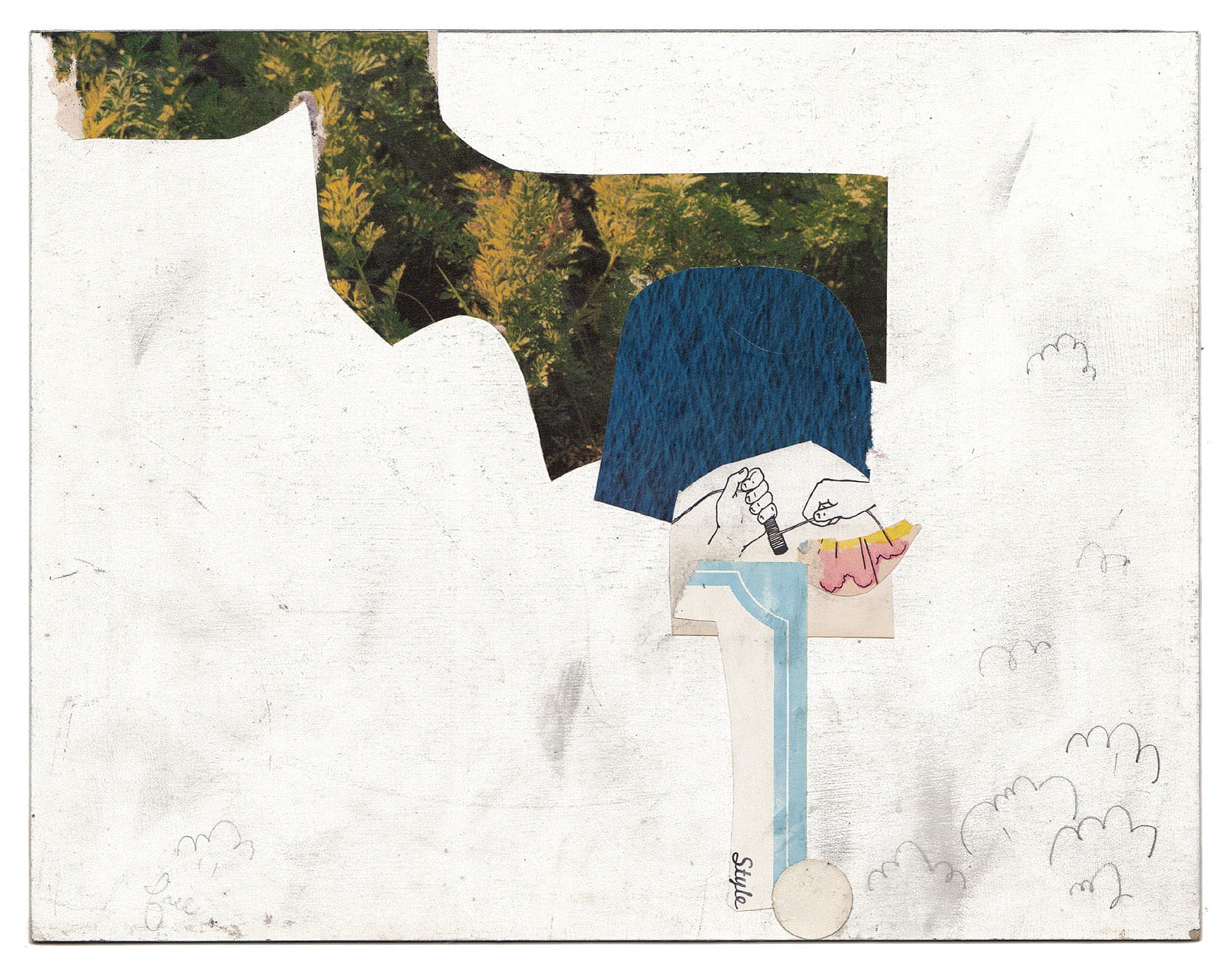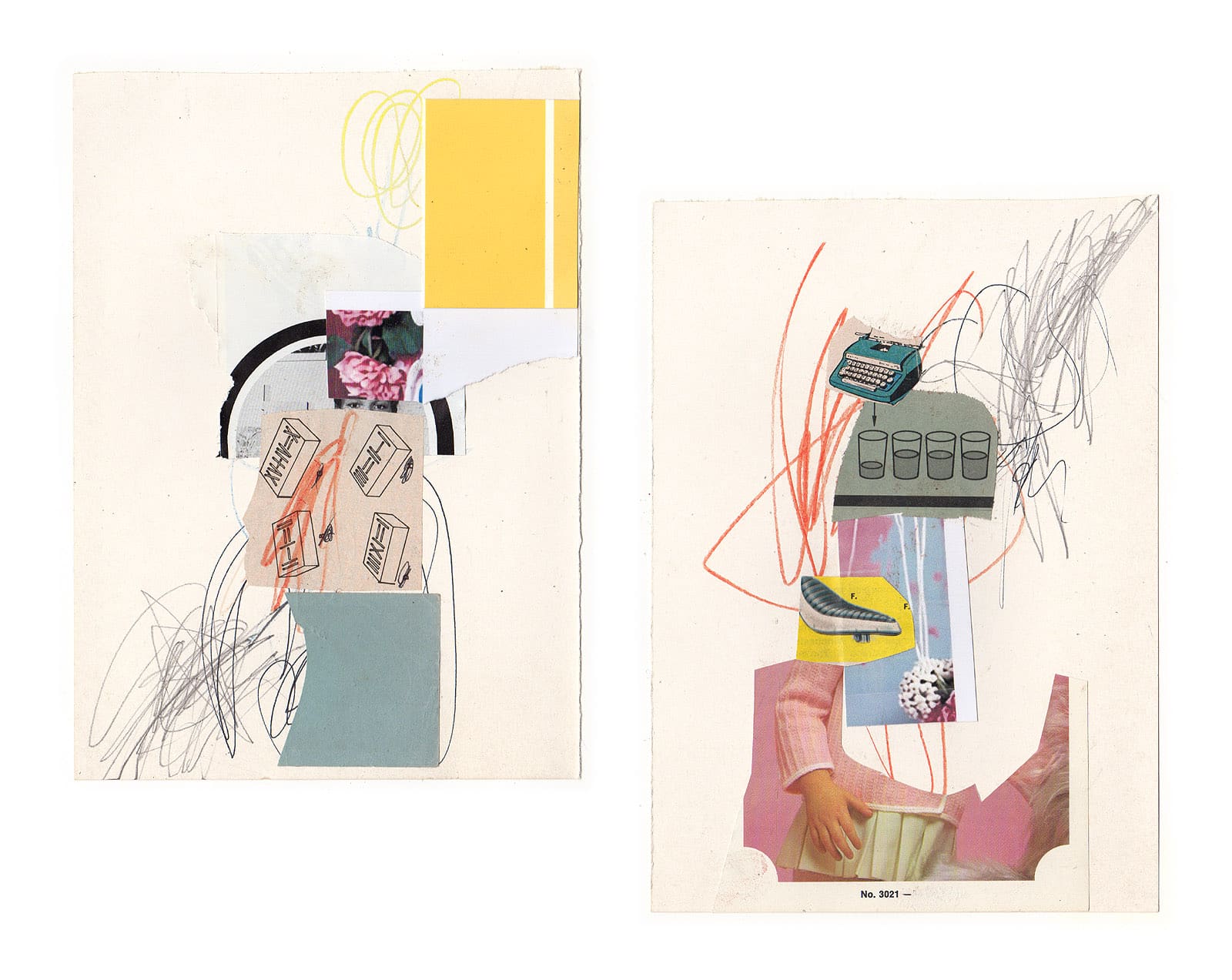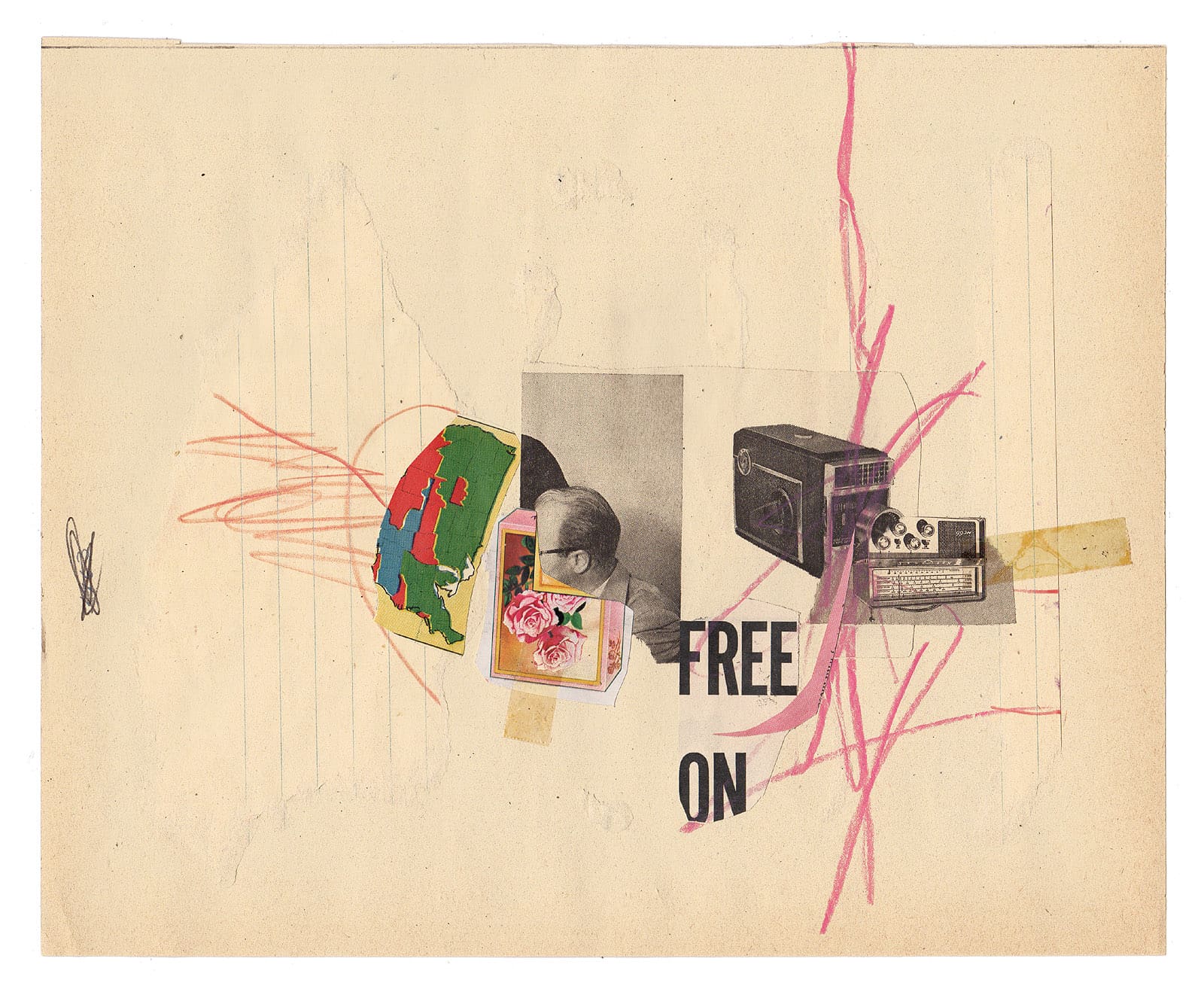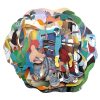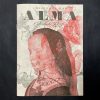Text by Fred Free
Over the last thirty-plus years of making collages I’ve tried everything. In the early 90s when I got back into collages near the end of my life in architecture, I just began by cutting up my then current photos because back then you could get double prints for a low low price at the local CVS and they were just awful quality to begin with so I really didn’t need double the awful. They were simplistic not so great but maybe not so awful collages. But because they were what they were it made me want to do more and find new sources. One of my favorite things about making collages today is the sometimes accidental nature of the process, but I hadn’t experienced that yet. Until one night while doing laundry at my girlfriend’s apartment building. It was a large room on the lower level of a large building and I can still see the trash can in the corner that usually filled up with stuff you need while waiting forever for your clothes to wash and dry, but this time there was a small box in there. I dumpster-dived a lot at art school so I was not above finding out what surprise was waiting inside this unusual looking misplaced box. It was filled with old medical slides. They were beautiful and I had no idea why they were there and I didn’t care – I just knew I needed them. The accidental finding started a two year exploration of creating collages in slide mounts. I started out using the medical slides themselves of course, but quickly moved on to using photo negatives, cut up printed transparencies, tape, crayons, dirt. And I got most of them printed. That was actually part of the obsession with using those materials at that scale because seeing them blown up blew me away.
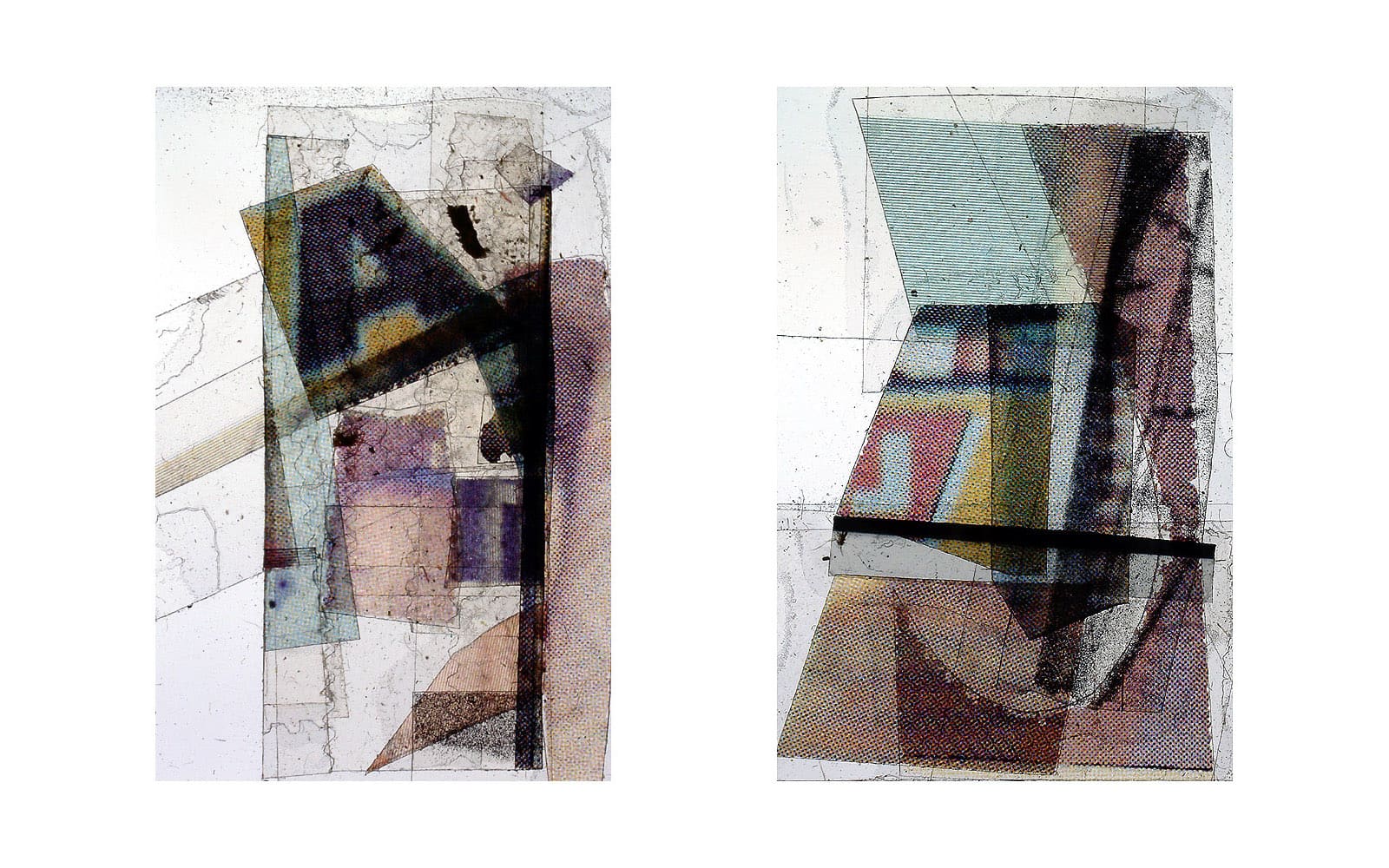
And then I had the dream. Just over thirty years ago- April 28th, 1994 to be exact – I had a dream that I returned to my childhood home and as I entered, I startled a gang of people who fled out the back window into an awaiting school bus. It was scary, until I noticed what they had been doing there. It was actually a gang of artists who had subtly transformed everything in the house – lamps, books, pictures on the wall and even cleaning bottles in the hall closet upstairs. Yes, I opened closets in my dream. It was stunningly strange and fun and so ridiculously inspiring the next morning that I knew for sure that transforming old things into slightly different new things was what I needed to do. What I was already kind of doing in collage, but needed to do more of.
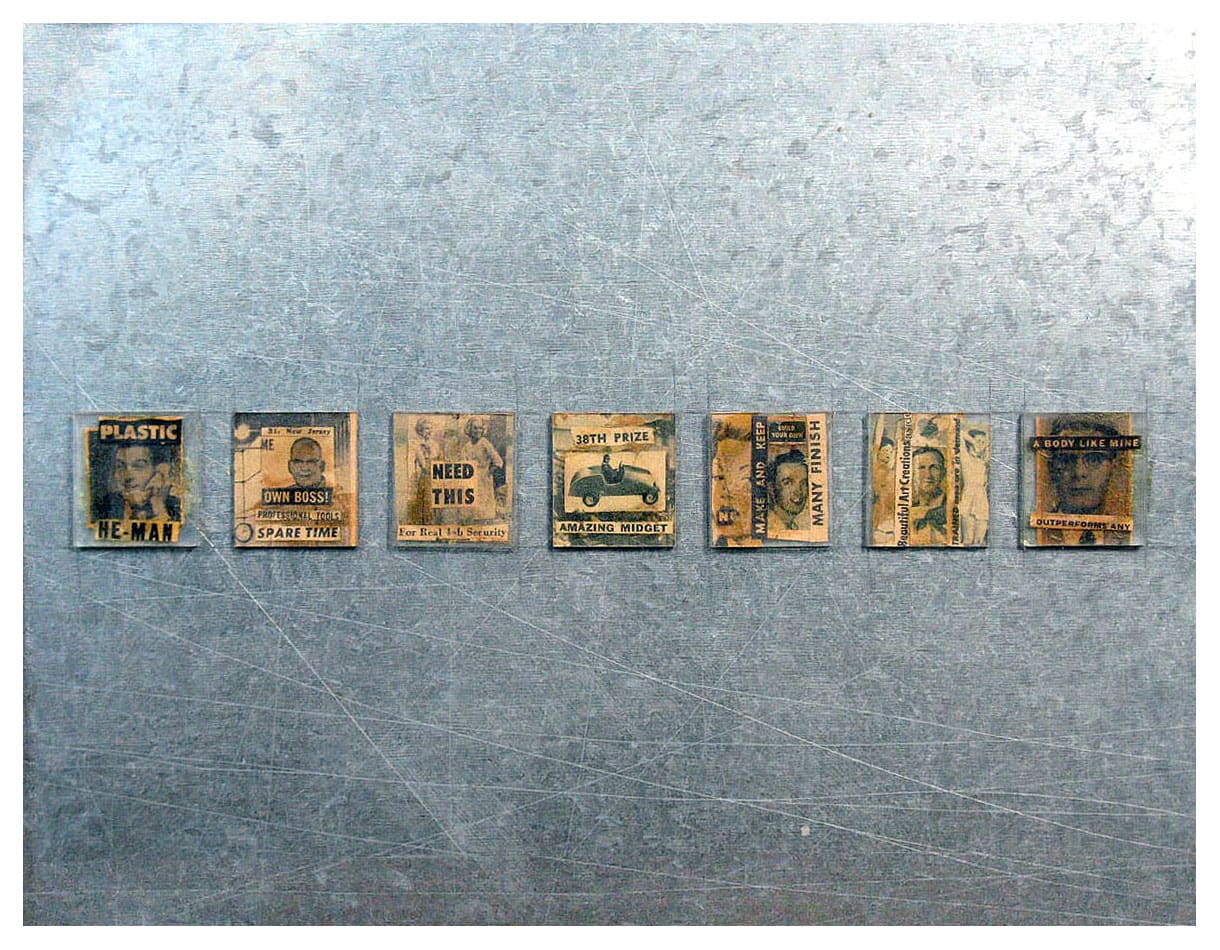
So I began to really embrace finding materials in any way possible while also embracing laundry room trashcan accident type stuff. I started walking the Boston alleys on trash days and looked for anything. Because I lived in a small apartment I would only pick up what I thought I could use until the next trash pick up day. This is when I began to think about time as part of the whole process and to only use what I had in front of me and to (try) not stockpile any materials. To live/work in the moment. So my materials were snapshots of my weekly walks – parking lot and ticket stubs, literal trash, transparencies on cloning, old books and magazines, leaves, other people’s photos, stamps, playing cards, stickers, posters, newspapers, packaging, cassette tapes. That last one inspired me to use sound for collaging. And then I started using video and the fax machine and old copy machines and then I got a computer and Photoshop and it felt like I hit a kind of saturation point. Like there wasn’t anything else to use – especially when the digital universe had it all. Why look around for happy accidents when you could do anything digitally. After a few years of saturated try anythingness, my son came along and I was done collaging for about five years right as the two thousands began.
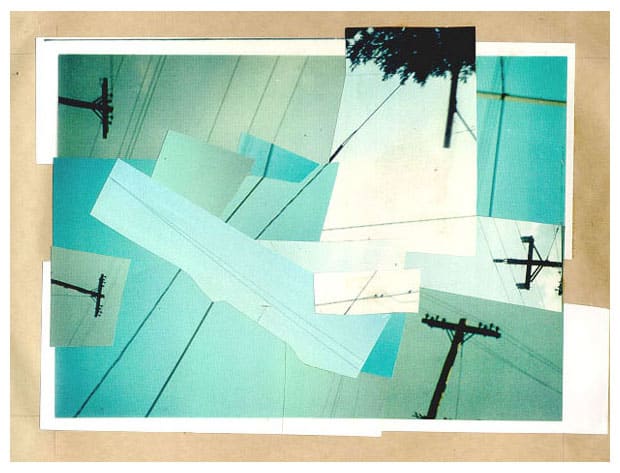
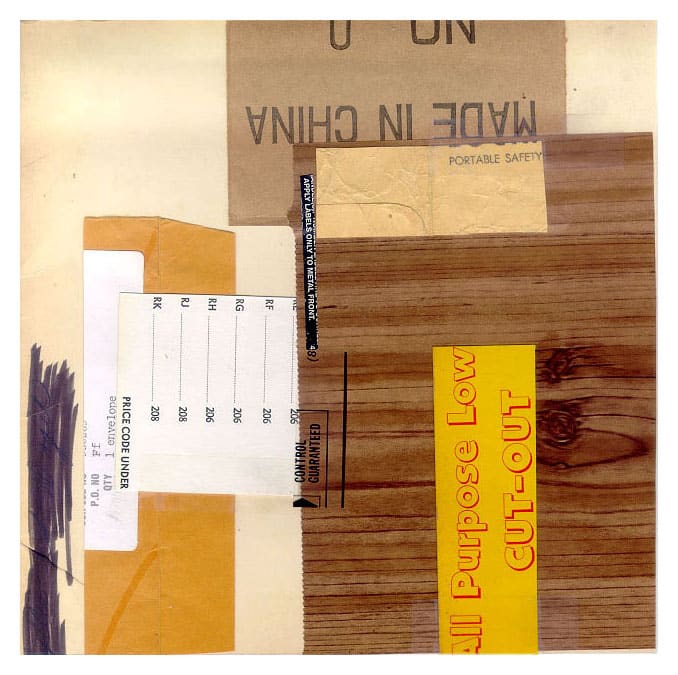
During that time of stay-at-home dad-ing I played simcity and changed diapers and went to playgrounds and watched Mister Rogers again and played with matchboxes again and relived all sorts of childhood memories through my son. When he was about four we began making art together and I got that art making feeling again, but something was different. I felt more focus and that focus was a direct result of being home with him everyday and every night witnessing his new life while reliving my old one before he got here. We also moved to a new place. More space and no more alleys. The combination of all of those things led me to make work that felt more about self-exploration than material-transformation. And the added space lead me to do more buying than finding – yards sales, library sales, ebay – and the materials began to look like things that could help with the exploration – books and magazines and photos from the years of my childhood. It was and is more about connectivity than nostalgia though. Connecting the then with the now. However now is defined. And nostalgia has something to do with longing for the past and I have no desire for that. Some not so great times back there. But those same times are also some of the reasons for the exploration.
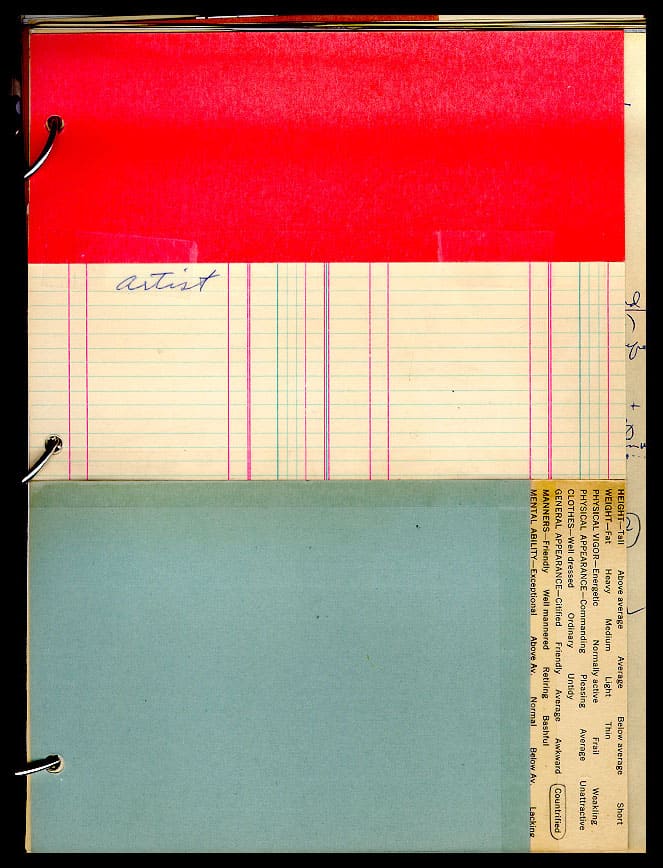
During the earlier part of my collage life I connected more with the physical aspects of materiality and exploration in actual spaces, now it’s more about connecting with and through time and ideas and moments while still trying to find happy accidents and random juxtapositions when materials become so called art. Which is something that hasn’t changed over the years. The collage process of transforming something into something else. It’s a rush. It’s a dream. It’s a life.
Learn more about Fred Free on Instagram or his website and be sure to check his books too.
